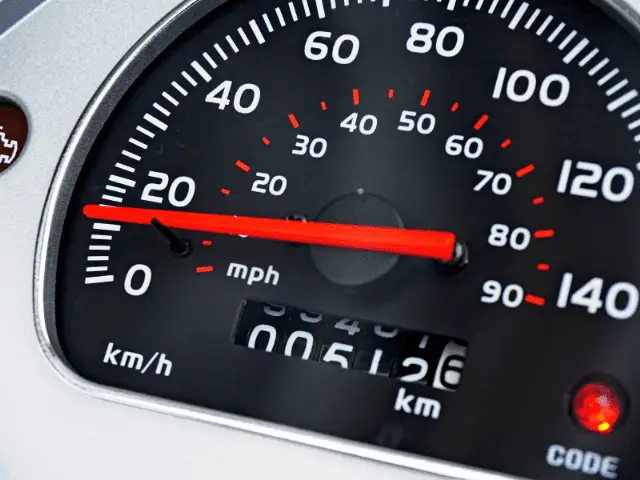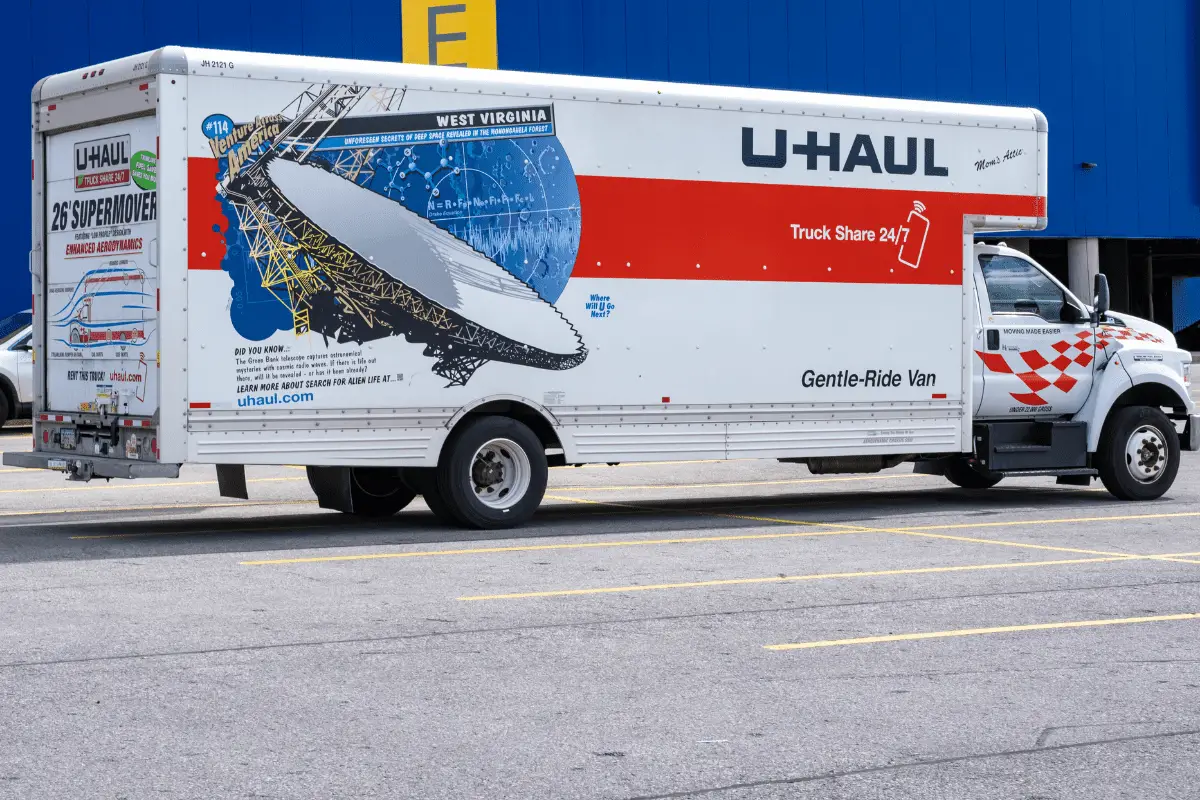So you’ve decided to move, you’ve got a lot of belongings, and you want to rent a large box truck, huh? Maybe you just want to be a box truck driver. The problem is, you’ve never driven anything larger than a small passenger car or an SUV.
Driving a box truck isn’t difficult, but it’s certainly different from driving your average car. Luckily, if you take it slow and pay attention to your surroundings, getting the hang of driving a box truck won’t take long.
To help you out, we’ve put together 15 tips on how to drive a 26-foot box truck!
Table of Contents
1. Inspect The Truck
Make sure you inspect the truck thoroughly before leaving. Usually, the rental company will take care of this for you, but it’s harmless to double-check.
Pro Tip: Take pictures of every square inch of your truck. Every scratch, every dent. I’ve never personally had any issues when returning a truck, but I had proof if any previous damage would try to be blamed on me.
Some things you should do include when inspecting your truck:
- Make sure your headlights, turn signals, and brake lights are all working
- Examine all the tires to make sure they’re properly filled with air
- Check the truck’s interior and exterior for any existing damage
- Adjust your side mirrors
- Get familiar with all the controls
- Check the weather forecast
- Buckle up
Once you’ve carefully inspected your truck and have familiarized yourself with everything, it’s now time to hit the road!
2. Always Check Your Side Mirrors

Because box trucks don’t have rear-view mirrors, it’s absolutely crucial to pay attention to your side mirrors, even more so than you usually do when you’re driving your passenger car.
Even in smaller box trucks, there are a lot of blind spots that prevent you from seeing what’s going on around you.
that prevent you from seeing what’s going on around you.
We’re not talking about checking your side mirrors every once in a while; we’re talking about checking them all the time! That said, make sure you know your blind spots well so that you ensure your own safety as well as the safety of the people around you.
3. Keep a Safe Distance
When driving a box truck, leave some extra space between you and the vehicle in front of you, even more than you would with a car. This is because a box truck, especially if it’s loaded, takes a longer time to stop.
If the car in front of you makes a sudden stop, you’re going to have to compensate for that. We’d recommend doubling the space you would normally keep when you’re driving a car.
Also, take advantage of the fact that sitting up higher, you can generally see well ahead of traffic. Pay attention to traffic building up and slowing down ahead of you so you can start putting on your brakes early.
4. Back Up Cautiously
Backing up a truck is a necessary skill for every driver and should be taken seriously. According to trucking insurance companies, a large number of incidents occur when a commercial vehicle driver is backing up.
occur when a commercial vehicle driver is backing up.
A good way to prevent that is to have someone behind the truck guide you while you back up. Keep them in your line of sight or your mirror at all times.
I also always try to avoid putting myself in a situation where I’ll need to back up as much as possible. Try to stop at truck friendly gas stations where you can pull in and pull out easily. Same goes with hotels. I try to stay at hotels with large parking lots that allow me to park without having to back in or out of a parking spot.
5. Take Your Time and Go Slow

We understand you’re in a rush or on the clock and want to get to your destination as soon as possible, but slamming the gas pedal isn’t worth it. First and foremost, you won’t be able to go any faster. Second, if you do, the chances of getting into an accident will increase.
Bottom line, take your time and stay at, or slightly below, the speed limit.
Even a long trip, going 5-10 mph slower will only set you back about an hour. An extra hour is totally worth it if that means reducing the chances you find yourself in an accident.
6. Make Wider Turns
This is one of the most important things to do. Because a box truck is obviously larger than a car, you have to compensate by taking wide turns.
Truckers make much wider turns to avoid hitting the curb, another vehicle, or, worst of all, a pedestrian!
7. Watch Out for Height Limits

Keep in mind that you’re driving a vehicle much larger than the average sedan. It might take you some time to adjust to having 26 extra feet behind you!
Bridges, overpasses, parking garages, and other structures will have height limits posted. Look out for those while keeping your truck’s height in mind.
8. Use Emergency Brakes at All Times
Always use the emergency brakes when parking your truck, especially on an incline. This provides stability to your truck and stops it from rolling down the hill.
when parking your truck, especially on an incline. This provides stability to your truck and stops it from rolling down the hill.
If your emergency brake is a lever, push the button and pull up on the lever. If your brake is a pedal, push it down with your foot until it locks.
Even if the vehicle seems to be on level ground, you still need to use the emergency brake.
9. Plan Your Trip Beforehand

Before you get a move on, plan your trip using a map or GPS. Avoid any severe elevation changes, such as driving across the mountains, if you can.
You should also avoid driving directly through big cities early in the morning or late in the afternoon when traffic is at its peak.
If it’s going to be a multi-day journey, it’s a good idea to go ahead and plan where you’re going stay overnight at a hotel. This way you can ask about what the parking situation is like at the hotel for large trucks.
10. Park Wisely
When parking, make sure you’re not in a spot where you’ll have to back out (are you sensing a common theme here?). You don’t want to be in a situation where you have to reverse the truck out of a parking spot. Like we said before, trucks don’t have a rear-view mirror, so backing up could be dangerous.
You want to back up your truck into the parking spot in such a way that when it’s time to leave, you can just drive forward and get out safely where everything is visible.
11. Secure Your Belongings
The most common thing the average mover or trucker overlooks is keeping their goods safe and secure.
When loading items onto the truck, use tie-downs, ropes, or whatever it takes to ensure that everything is properly secured and ready to go without moving or breaking.
12. Use Moving Blankets
If you’re a mover, consider using moving blankets, they’re crucial for protecting your belongings. You don’t want your furniture or cargo to break or scratch, which is why you shouldn’t substitute moving blankets for anything else. They’re well-padded and designed to keep your belongings safe.
13. Be Extra Careful When Passing
If you’re driving on a two-lane road, you shouldn’t be passing at all. However, bear in mind that on multi-lane highways, the left lane is usually reserved for faster-moving cars. So, you don’t want to be in that lane.
If you do wind up there, you’ll have to continuously change lanes to get out of people’s way. To summarize, aim to stay in the same lane as much as possible and avoid passing.
Tracing back to some of the earlier points, passing without a rear-view mirror is risky, especially if you’re not used to driving a truck.
14. Keep Your Pets in the Front
On moving day, It goes without saying (but we’re going to say it anyway) that your pet should NOT be put in the back with all your stuff. Whether you have a fish, a dog, or a bird, keep them in the front with you at all times. It can be extremely dangerous because there are no vents to cool or heat the truck’s box.
Aside from ventilation, something may fall on them and hurt them. Altogether, it’s a dreadful thing to do, so do not it.
15. Get Insurance
Last but not least, it’s a good idea to get rental truck insurance , either from the rental business or from your vehicle insurance broker. Make sure you’re covered for theft, damage (to the truck and your belongings), and liability.
, either from the rental business or from your vehicle insurance broker. Make sure you’re covered for theft, damage (to the truck and your belongings), and liability.
Let’s Wrap It Up!
Operating a big truck is different from driving your average sedan. You’ve got to be patient, take it slow, and be extra careful.
We’ve listed 15 steps on how to drive a 26-foot box truck to help you out. Getting used to the significantly different weight and height may be difficult at first, but by using these tips above, you’ll be up and running in no time!
Good luck!
Featured Image Photo Credit: Colin Temple / Shutterstock.com


